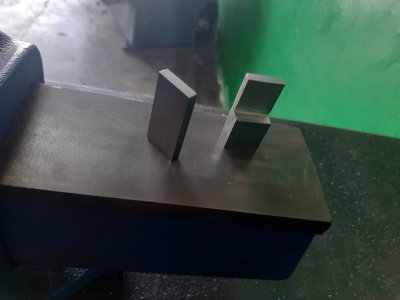- Joined
- Jul 8, 2018
- Messages
- 880
It's not the same sort of flatness as you are thinking of it. Consider a bearing surface, like the ways of a lathe. Getting anything truly flat is impossible, so what you try to do instead is to get as many points on the same plane as possible. When you start out, you have (for example) one high point per square inch. The more you scrape, the more high points per square inch you have, because removing a high point results in all of the slightly-lower points now being high points. Carry this process to infinity, and you will have a perfectly flat surface, but nobody has that sort of time - so you set yourself a "good enough" point, say 30 points per square inch, and stop when you achieve that. The "points", by the way, are identified by putting some blue dye on a surface plate, and rubbing the workpiece against it: the number of blue points in an area 1" square are counted.
For your metal block, this sort of thing is less of an issue: you have one high point you are trying to get rid of in order to be able to measure squareness accurately. But if you want to learn scraping, get a surface plate and some dye, and attempt to get the flatness down to a specified number of points per square inch.
Note that this is flatness, though, which is different from squareness. Something can be flat and not square, or square and not (sufficiently) flat.
For your metal block, this sort of thing is less of an issue: you have one high point you are trying to get rid of in order to be able to measure squareness accurately. But if you want to learn scraping, get a surface plate and some dye, and attempt to get the flatness down to a specified number of points per square inch.
Note that this is flatness, though, which is different from squareness. Something can be flat and not square, or square and not (sufficiently) flat.



